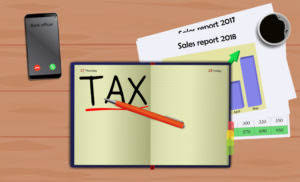
For example, if $100,000 of annual revenue relates to sales made on credit, the allowance estimate will equal the percentage chosen multiplied by the $100,000. Alternatively, you may find that applying different percentages to various portions of the AR balance based on the number of days payment is late is more accurate. The differences between GAAP and IFRS in handling write-offs can lead to significant variations in reported earnings, assets, and equity. These discrepancies are crucial for stakeholders who rely on financial statements to make informed decisions. As the global business environment continues to evolve, the convergence of accounting standards remains a topic of ongoing discussion, with the potential to streamline these divergent practices in the future. From an accounting perspective, the direct write-off method can cause fluctuations in the income statement due to its immediate impact on net income.
Direct Write-Off Vs Allowance Method – Meaning, Differences & Similarities
According to the GAAP standards, expenses and revenues need to be recorded in the same accounting period. However, with the direct write-off method, the bad debt expense is not matched with the revenue it helps generate. Due to this, public companies that need to adhere to GAAP accounting standards cannot use the direct write-off method to account for uncollected invoices. The direct write-off method is an accounting method to record uncollectible accounts receivables. As per this method, a bad debt expense ledger account is recognized and written off when an invoice is found to be uncollectible.
Accounting Standards: Accounting Standards and the Direct Write Off Method: Navigating the Complexities
It’s crucial for stakeholders to understand these limitations and consider the broader implications on a company’s financial statements when using this method. For example, consider a company that makes a large sale in December but does not receive payment by the direct write-off method fiscal year-end. If the payment is still outstanding several months later and the company decides to write off the debt, the expense will be recognized in a different fiscal year than the revenue from the sale.

Provide a List of Sources, Including Accounting Standards and Authoritative Texts
Let us look at the examples of the allowance method to understand the concept better. My Accounting Course is a world-class educational resource developed by experts to simplify accounting, finance, & investment analysis topics, AI in Accounting so students and professionals can learn and propel their careers. Let us understand the direct write-off method journal entries with the help of a couple of examples.

Financial Consolidation & Reporting

While the direct write-off method isn’t in compliance with generally accepted accounting principles (GAAP), the allowance method is. Under this method, a company at the end of its business year needs to review its accounts receivable and estimate how much of the total figure it thinks it won’t be able to collect. Under the allowance method, a company needs to review their accounts receivable (unpaid invoices) and estimate what amount they won’t be able to collect. This estimated amount is then debited from the account Bad Debts Expense and credited to a contra account called Allowance for Doubtful Accounts, according to the Houston Chronicle.

Processing
- It must be within the rules and laws framed by the bodies for an accounting of transactions so that a true and correct picture of the Financial Statements can be shown to the stakeholder of the entity.
- By writing off bad debts only when they become apparent, businesses can avoid the complexities of estimating future uncollectible amounts.
- For instance, a company experiencing a year with a substantial write-off may report lower profitability compared to a year with minimal write-offs.
- The Internal Revenue Service (IRS) allows the direct write-off method for tax purposes, but only under certain conditions.
- This action would be documented, assessed for consistency and compliance, and communicated to stakeholders to ensure transparency.
- While it offers ease of use and immediate recognition of uncollectible amounts, it does not comply with GAAP due to its violation of the matching principle.
- The direct write-off method is an accounting technique that records a loss when a customer account is deemed uncollectible.
However, for businesses seeking more accurate financial reporting, the allowance method may be more appropriate. By comprehending the nuances of the direct write-off method, businesses can make informed decisions about their accounting practices and maintain better control over their financial health. Implementing the Direct Write-Off Method requires meticulous attention to detail and a thorough understanding of the financial implications it has on a company’s books.
Small Businesses

This is why GAAP doesn’t allow the direct write off method for financial reporting. GAAP mandates that expenses be matched with revenue during the same accounting period. But, under the direct write off method, the loss may be recorded in a different accounting period than when the original invoice was posted. The IRS allows bad debts to be written off as a deduction from total taxable income, so it’s important to keep track of these unpaid invoices in one way or another.
- You have been attempting to reach the customer for the $3,000 invoice for months and have received no response.
- Under IFRS 15, revenue from the sale of goods is recognized when control is transferred to the customer.
- Rather than writing off bad debt as unpaid invoices come in, the amount is tallied up only at the end of the accounting year.
- The direct write-off method is a significant accounting practice that directly impacts the financial statements of a company.
- Most of these debts are paid by the customer in a timely manner or without a delay.
- By adjusting accounts receivable for estimated bad debts, the balance sheet reflects the net realizable value of receivables, providing stakeholders with a clearer understanding of what the company expects to collect.
- Using the direct write-off method of accounting, a business owner can debit the bad debts expense account and credit accounts receivable.
The allowance method, on the other hand, compels you to declare bad debt expenses every fiscal year. While the direct write-off method may offer simplicity, it poses significant challenges from a regulatory perspective. It is often at odds with the principles of conservative accounting and does not provide the most accurate picture of a company’s financial health. As such, it is typically reserved for smaller, less complex businesses or for tax reporting purposes, rather than for presenting a transparent view of a company’s financial standing to investors and regulators.